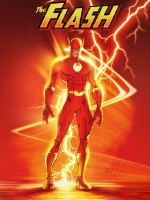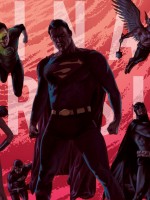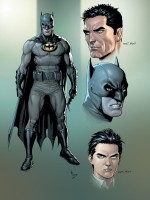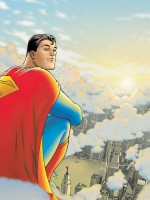Cosmology
Geoff Johns and Grant Morrison. Take a look at the points where their careers have overlapped and see the origins for DC’s new initiative.
Geoff Johns and Grant Morrison have been DC’s most consistently successful writers since the early 00’s. In many ways, they are similar, with both having a fondness for revamping old characters from the company’s long history. They’ve even collaborated in the past, co-writing such projects as DC Universe #0 and the weekly series 52 (with other writers as well). It’s only natural for DC to encourage their exclusive writers to work on their marquee characters. As a result, the number of examples where these two writers have had a run on the same character or team at different times is rapidly increasing.
The Flash. Grant Morrison had an eight issue run on The Flash in 1998, all of which were co-written by Mark Millar. Morrison’s take on the character at the time was partially rooted in real-world science, incorporating physics and quantum theory into how his powers work. He introduced a few new villains as well, including a living costume and a pair of celestial high rollers. Because of the briefness of the run (only in comics is eight months considered “brief”), it feels more like Mark Waid’s intermission than a real commitment to the character. Morrison has expressed some interest in doing additional Flash projects in the future, possibly as part of DC’s Earth-1 original graphic novels.
Geoff Johns has famously had two runs on the character. Both of them seemed primarily focused on giving some credibility to the Flash’s traditional rogues gallery, who had been mostly written off by other writers as a lost cause at that point. Johns’ work on the book is considered to be among the most definitive, and his initial departure from it caused a drop in quality that it never quite recovered from until he returned to it.
The Crises. In 2005, Johns wrote Infinite Crisis. This story was very much a direct sequel to 1985’s Crisis on Infinite Earths, featuring many of the same characters. It effectively reversed DC’s abolishment of the multiverse.
Three years later, Morrisons’ Final Crisis arrived. His version had very little in common with Crisis on Infinite Earths, or any of DC’s previous Crises for that matter (except perhaps for 1980’s Crisis on New Genesis). While there was a multiversal threat, it only effected the main story at the very end of the series. The bulk of it is about the heroes of Earth having a final showdown with the villains from Jack Kirby’s Fourth World comics.
Superman. All-Star Superman, a 12 issue series written by Morrison, is so popular that it’s received its own animated movie adaptation. This comic interprets Superman as more of a folk hero, accomplishing a string of impossible challenges before flying off into the sun. It also went out of its way to include several frequently used concepts from past Superman stories, including Superman being mind-controlled and Jimmy Olsen turning into something weird… with the twist being that, this time, both happen in the same issue! The New 52 has brought Morrison back to the character.
Johns’ run on Action Comics took a very back-to-basics approach to Superman and his world. He established the Phantom Zone criminals as the movie version that everyone was familiar with, and also restored Brainiac’s status as the shrinker of Kandor after years of Tolos the Wizard taking credit for it. A few villains were even powered-up in creative ways, such a Metallo having access to every color of kryptonite.
Both writers did a take on Bizarro World. Morrison stayed true to the spirit of the 60’s stories, with his Bizarro Justice League being comical but not effectual as antagonists. Johns found more of a balance, making each Bizarro dangerous as well as humorous.
Justice League. Morrison’s JLA refocused on DC’s big seven. Eventually, he expanded it into an entire superhero pantheon, with each League member corresponding to one of the twelve Olympians. This run was full of crazy visuals befitting such a cosmically powerful team.
The New 52 Justice League written by Johns has only just begun. Already, it’s put a heavy emphasis on character interactions. Johns has promised that upcoming stories will team-up the characters in unconventional pairs, such as Flash and Wonder Woman.
Batman. The Batman run done by Morrison has spanned three different ongoing series. What started as an attempt to integrate the wacky stories of the 50’s with the dark and gritty Batman we have today has caused Morrison to take the character in some surprising new directions. Overall, his Batman is more in line with the version seen in team settings than the one normally seen in his solo books.
The only Batman credits Johns has under his belt so far are a few fill-in stories, including the first meeting between Gotham’s premier assassins Deadshot and David Cain, as well as half a Julie Schwartz tribute. His first major Batman project will be Batman: Earth-1, an original graphic novel that will be released in May of next year. Johns claims his Batman is very grounded, having to deal with realistic problems such as malfunctioning gadgets.
Regardless of your feelings for the two authors, it’s clear that in them, DC has found complimentary visions that are able to simultaneously work and diverge while building the DC cosmology into something greater and more unified than at almost any other point in its past. As the two work with other creators, it’s going to be interesting to see what the new world looks like when it’s finished being built.




